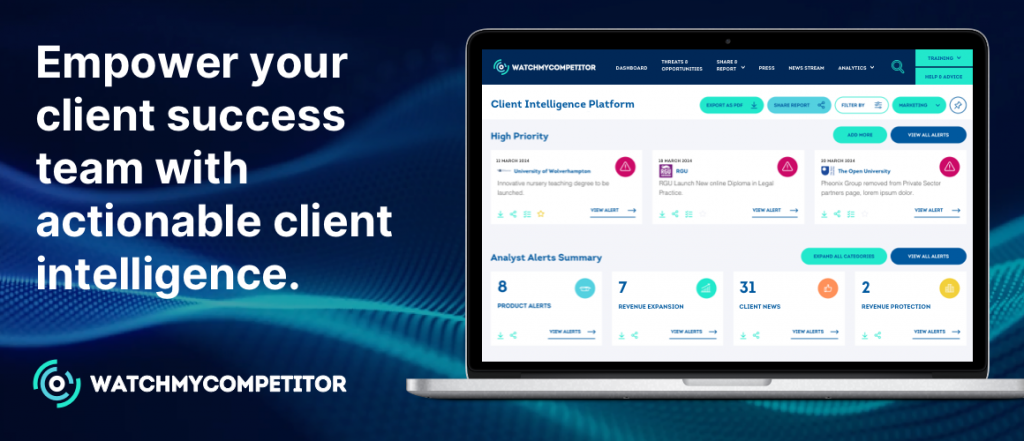
Introduction
Customer expectations now mutate faster than ever, demanding a departure from generic, one-size-fits-all approaches. Businesses must delve deeper, fostering a personalised understanding of their clients’ needs, fuelled by data-driven insights.
This is where client analysis emerges as a game-changer. It empowers businesses to transcend superficial interactions and tailor their offerings and communication styles to resonate with individual client preferences. By examining client data, businesses unlock a host of possibilities:
A) Craft targeted marketing campaigns
Imagine pinpointing exactly what resonates with each client segment. In-depth client analysis allows for the creation of targeted messaging that speaks directly to specific needs and aspirations. This translates to significantly higher engagement and conversion rates.
B) Develop innovative product offerings
Intuition can only take you so far. Client analysis provides invaluable insights into client pain points and unmet needs. This knowledge becomes the cornerstone for developing products and services that directly address market demands and solve real customer problems.
C) Predict client behaviour
Understanding your clients allows you to anticipate their needs and proactively address potential issues. Imagine notifying a customer about a potential service disruption before they even experience it. Client analysis fosters stronger relationships and builds trust through proactive problem-solving.
D) Deliver exceptional customer service
Every client interaction becomes more meaningful when personalised. By leveraging client data, businesses can tailor support experiences to individual preferences.

Defining Client Analysis
Client analysis is the systematic process of collecting, analysing, and interpreting data about your clients. This data can encompass various aspects, offering a holistic view of the client:
Demographics: Age, location, income level and other demographic information provide a foundation for understanding your client base.
Behavioural data: Website interactions, purchase history, support ticket submissions, and app usage patterns reveal valuable insights into how clients engage with your brand.
Psychographics: Uncovering your clients’ values, interests, and attitudes allows you to connect with them on a deeper emotional level, fostering a sense of community and brand loyalty.
Feedback: Surveys, reviews, and one-on-one conversations provide qualitative data that adds depth and context to the quantitative data collected.
Modern client analysis goes a step further by utilising advanced tools and methodologies. These tools automate data collection, extract complex insights from massive datasets, and generate insightful reports to inform strategic decision-making.
Consider WatchMyCompetitor’s client intelligence platform as a valuable resource for gathering competitive insights that can shape your client engagement strategies.
The 3 Key Steps For Effective Client Analysis
Conducting a comprehensive client analysis requires a well-defined approach. Here’s a breakdown of the 3 key steps involved:
1) Define your goals
The initial step is to establish clear goals for your client analysis. Are you looking to identify clients at risk of churn? Perhaps you want to discover hidden upsell opportunities. Having defined objectives guides the data collection process and ensures you gather the most relevant information.
2) Data collection
Once you have defined your goals, it’s time to gather the data needed to achieve them. Data can be collected from various sources:
- Customer relationship management (CRM) systems
- Website analytics platforms
- Customer surveys
- Social media interactions
- Internal data sources
3) Data cleaning & integration
Data accuracy is crucial for generating reliable insights. The data cleaning and integration phase involves ensuring data accuracy and consistency across different sources. This may involve:
- Identifying and correcting data errors
- Data integration
- Data Analysis
Once you have cleaned and integrated your data, it’s time to extract meaningful insights. This involves utilising data visualisation tools and advanced analytics techniques:
- Data visualisation tools
- Advanced analytics techniques
- Actionable Insights
The ultimate goal of client analysis is to translate data into actionable insights that inform business decisions. Interpret the data to extract practical recommendations:
- Develop targeted marketing campaigns.
- Optimise product offerings.
- Improve customer service.
- Build stronger client relationships.
Client Analysis: Tech Advancements
The area of client analysis is undergoing a transformative shift fuelled by the ever-evolving power of Artificial Intelligence (AI) and Machine Learning (ML).
These cutting-edge technologies are empowering businesses to delve deeper into client data, unlocking a wealth of insights that were previously unimaginable. Let’s explore how AI and ML are revolutionising client analysis:
A) Automated data collection & analysis
Gone are the days of manual data entry and tedious analysis. AI-powered tools can automate the data collection process, seamlessly gathering information from various sources like CRM systems, website analytics platforms, and social media interactions.
This frees up valuable time and resources for businesses to focus on strategic initiatives. For example, WatchMyCompetitor’s client intelligence platform utilises AI to automate data collection from various online sources, providing businesses with a comprehensive view of their competitive landscape and client behaviour.
B) Identifying complex patterns
Client data often holds hidden patterns and connections that are difficult for humans to detect. ML algorithms excel at identifying these complex patterns within massive datasets.
These insights can shed light on client preferences, predict future behaviour, and uncover hidden opportunities for growth. Imagine using ML to analyse customer support ticket data and identify recurring issues. This proactive approach allows businesses to address potential problems before they escalate, fostering stronger client relationships.
C) Generating predictive models
AI and ML can be harnessed to create sophisticated predictive models that anticipate client behaviour. These models can predict everything from churn risk to potential upsell opportunities. Imagine using a predictive model to identify clients at risk of churning and proactively engage them with personalised offers and support.
This data-driven approach allows businesses to retain valuable clients and optimise their marketing efforts. For instance, Introhive, a leader in data cleansing and integration solutions, empowers businesses to leverage AI-powered predictive modelling to anticipate client needs and personalise the customer journey for maximum impact.
The benefits of embracing tech for client analysis
By embracing AI and ML technologies, businesses can elevate their client analysis efforts to a whole new level. These advancements allow for a deeper understanding of client needs and preferences, ultimately leading to more informed decision-making, stronger client relationships, and sustainable business growth.
Case Studies Of Client Analysis
The power of client analysis, amplified by cutting-edge technologies, is evident in the remarkable results achieved by various organisations. Here are two real-life examples that showcase the transformative impact:

1) Netflix: personalisation powerhouse
The entertainment giant, Netflix, has become synonymous with personalised recommendations. This level of personalisation wouldn’t be possible without a sophisticated client analysis framework fuelled by AI and Machine Learning.

2) Spotify: tailoring the soundtrack of your life
Similar to Netflix, Spotify leverages the power of client analysis to personalise the music experience for millions of users. They collect data on user listening habits, including playlists created, songs skipped, and genres explored.
Client Analysis Journey: Getting Started
Building a robust client analysis framework requires careful planning and execution. Here are some practical tips to get you started:
- Identify Key Performance Indicators (KPIs): Define measurable metrics that align with your client analysis goals. These metrics will help you track the progress and success of your client analysis efforts.
- Invest in the right tools: Utilise platforms like WatchMyCompetitor’s client intelligence platform for data collection and analysis. Explore solutions like customer relationship management (CRM) software and marketing automation tools for streamlined client interactions.

Final Thoughts
By prioritising client analysis and leveraging cutting-edge tools and strategies, businesses can cultivate strong client relationships, optimise their offerings, and achieve sustainable growth.

